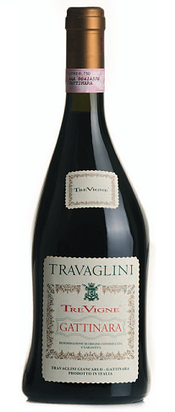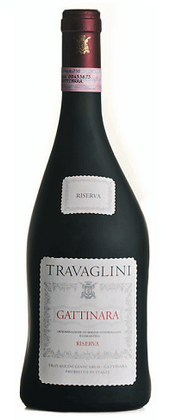Winegrowers around the world speak lovingly of old vines. Though the definition is never official, nor even clear, many bottles still carry the moniker, Vieilles Vignes, Vecchie Viti or Viñas Viejas, depending on whether you’re talking about French, Italian or Spanish wines. A tasting of Travaglini’s Gattinara in New York recently drove home the value of old vines.
Cinzia Travaglini and her daughter, Alessia, who represent the 4th and 5th generation of the Travaglini family, presented the wines, not intending to show the importance of old vines. But, for me, the tasting did just that.
First, a little background about Gattinara, a small DOCG (Denominazione di Origine Controllata e Garantita) in northern Piedmont, and the family. Only 25 miles from the Alps, this part of Piedmont is also known as Alto (literally, high) Piemonte. Though small, covering only about 250 acres, Gattinara has long been known for its high-quality wines. In 1967, it was among the first to being awarded DOC (Denominazione di Origine Controllata) status. Then, in 1990, it became only the 6th area in Italy to receive coveted DOCG status, joining Brunello di Montalcino, Barolo, Barbaresco, Chianti and Vino Nobile di Montepulciano.
The soil and climate are unique and accounts for Nebbiolo’s expression in their wines, according to Cinzia. The soil is old volcanic, with lots of granite and minerals. The proximity to the mountains means the area is cool and well-ventilated thanks to ever-present breezes. Cinzia explains that the elevation accounts for the dramatic 30+ degree diurnal variation — from 77 to 79-degree daytime temperature to 43 to 45 degrees at night — and keeps the wines elegant and fresh.
As with Barolo and Barbaresco, its cousins further to the south, Gattinara relies primarily on the Nebbiolo grape (locally known as Spanna), but, unlike its cousins, allows small amounts of Bonarda and Vespolina to be included in the blend. Bonarda is included in the blend by many producers (but not Travaglini) to soften what can be the rather angular Nebbiolo, according to Cinzia. Vespolina adds color, but detracts from the aging potential in Cinzia’s mind, so Travaglini opts not to include it, either, preferring to use Nebbiolo exclusively for their Gattinara.
Cinzia explains that the grape growing and winemaking tradition of the Travaglini family date to the 19th century, but it was Giancarlo, her father, who transformed the business in 1958 by building a winery, modernizing the vineyards, and selling wine outside of the local area, even exporting it to the U.S. as early as 1960. He was the first to use French barriques (small 225-liter barrel) for aging and to focus on quality instead of quantity. Other producers followed, upgrading the entire DOC, according to Cinzia. Travaglini owns more than half of the vineyard acreage of the DOCG and accounts for roughly half of the production of the entire DOCG. They buy no grapes or wine, using only their grapes, the vast majority of which are Nebbiolo, with a tiny amount of Vespolina and Bonarda for a locally consumed wine.
I t’s impossible to speak of Travaglini’s wines without mentioning their unique, now trademarked bottle, which looks like someone sat on it while it was being made. Giancarlo designed the flat-sided bottle in 1958 to catch the sediment, like a decanter. As a marketing experiment, they bottled half of their 1982 production in normal bottles and half in their traditional bottle. The half bottled in normal bottles remained unsold for some time, according to Cinzia. The rest is history.
t’s impossible to speak of Travaglini’s wines without mentioning their unique, now trademarked bottle, which looks like someone sat on it while it was being made. Giancarlo designed the flat-sided bottle in 1958 to catch the sediment, like a decanter. As a marketing experiment, they bottled half of their 1982 production in normal bottles and half in their traditional bottle. The half bottled in normal bottles remained unsold for some time, according to Cinzia. The rest is history.
Travaglini bottles three DOCG Gattinara, a Nebbiolo Coste della Sesia DOC, which is the second appellation of Gattinara and made from young, seven to ten-year old, Nebbiolo vines, plus two unique and absolutely stunning wines, both from Nebbiolo: Nebolè, a metodo classico sparkling wine, and Il Sogno, a sweet one. As much as I adored Nebolè (not yet available in the U.S.) and Il Sogno, I will focus on two of Travaglini’s Gattinara, one labeled Tre Vigne and the other, Riserva, both from the 2013 vintage, because they highlight the dramatic influence of old vines.
The grapes for their Gattinara Tre Vigne come from what Alessia describes as three historic vineyards. Each vineyard brings a different component to the finished wine thanks to differing microclimates and soils. One provides Nebbiolo that delivers better color, while another provides complexity, and the third imparts a perfume and freshness from its higher elevation.
 The Riserva, in contrast, comes from their oldest vines, 45 to 78 years old, in the estate, none of which are located in the three vineyards that provide fruit for the Tre Vigne bottling.
The Riserva, in contrast, comes from their oldest vines, 45 to 78 years old, in the estate, none of which are located in the three vineyards that provide fruit for the Tre Vigne bottling.
The winemaking is slightly different, with about 20 percent of the Tre Vigne aging in a combination of new and old barriques, compared to about 10 percent for the Riserva. The remainder of both wines ages in old large Slavonian oak casks. The production levels are similar. Of Travaglini’s average annual 250,000 bottles, the Tre Vigne represents about 10 or 11 percent, while the Riserva accounts for 13 to 14 percent. Both are made only in what they consider excellent vintages. The big difference in their character comes from the age of the vines.
Mind you, both of these wines are delicious. They’re just very different.
The Travaglini 2013 Tre Vigne Gattinara transmits a lovely austerity, with a youthful Barolo-like sturdiness. It grows in the glass, expressing a floral component and the barest hint of tarry minerality. Its structure and acidity remind you that it is the product of Nebbiolo. Firm, not aggressive, tannins appear in the finish and reinforce its austerity. Judging from how the 2006 Tre Vigne showed at the same tasting, I suspect the 2103 will blossom after another 5 to 10 years of bottle age. ($50, 92 points)
The still youthful Travaglini 2013 Riserva is expansive and deep with a seemingly never-ending finish. It is the epitome of power and elegance. While the Tre Vigne has an appealing firmness and austerity, the Riserva is firm, yet paradoxically, opulent with more minerality. In brief, it’s better balanced at this stage because all of the components harmonize. I bet that, if measured, the tannins and acidity of the two wines would be similar. But on the palate, the Riserva feels more complete. That’s old vines speaking. ($60, 95 points)
OK, why? Ask three winemakers why old vines deliver better wines and you get four answers. They include, the roots go deeper and extract more from the earth. The lower yields that aging vines can muster mean that the wines are more concentrated. Old vines are better adapted to the environment. Old vines are like, people, somehow, “wiser.” Whenever there are multiple answers to a question, the odds are that no one of them is entirely correct. I cannot explain why old vines produce better, more complex, wines, but they do. And the lack of an explanation is one of the wonders of nature.
October 9, 2019
E-mail me your thoughts about old vine wines in general or Gattinara in particular at [email protected] and follow me on Twitter @MichaelApstein
